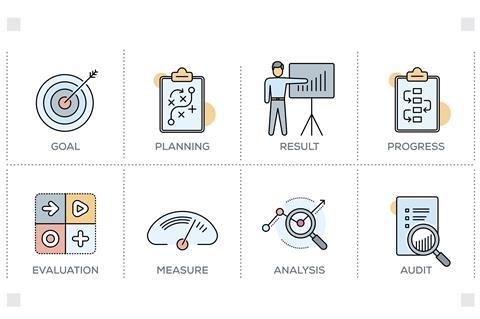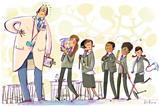Three ways to provide students with test feedback and increase their motivation

Science teachers test students’ knowledge and understanding regularly, typically with topic tests. But are tests as productive as possible? In my role as assessment editor for Oxford University Press (OUP), I have researched how to use summative tests in a formative way to inform teaching and learning.
The formative use of summative tests is not new. Paul Black and Dylan Wiliam made much of this approach in their seminal review of classroom assessment back in 1998, and we know good quality verbal and written feedback can have a powerful influence on learning. In addition, two recent research areas have potentially useful implications for teachers when giving feedback from tests: anticipated intervention and self-regulated learning.
Anticipated intervention considers how students are motivated by knowing they will receive feedback on their work. This approach assumes tests are not done to students, but done with students. Here, students are part of the assessment process and use the outcomes to inform their own learning.
Self-regulation gives students the skills to identify their own shortfalls and take action to remedy them. The use of structures to help students identify strengths and intervene appropriately helps them develop this life skill.
Traditionally, tests are given to students and they get a grade or score in return. Progressive steps towards making tests more formative would be:
- No feedback from tests planned
- Teacher-led testing and feedback
- Learner-centred testing and feedback
- Learner-led testing and feedback
- Learner-led assessment planned
More formative tests encourage learners to respond to feedback and self-regulate. Here are three practical approaches to more formative tests.
Test analyser spreadsheets (teacher-led)
One strategy is to put test scores from each student and question into a spreadsheet. Generate average scores per question to identify areas the class has done well, or need more work. Then plan to address any common issues. However, this approach is time consuming and might be best used sparingly, perhaps three times a year or after a mock exam.
| Topic area | Before test | After test |
|---|---|---|
|
Features of chemical equations |
R A G |
R A G |
|
Types of chemical equations |
R A G |
R A G |
|
Writing word equations |
R A G |
R A G |
|
Writing symbol equations |
R A G |
R A G |
|
Calculating percentage mass |
R A G |
R A G |
Pre-test cover sheet (learner-centred)
A pre-test cover sheet helps learners to anticipate feedback and encourages them to reflect on how well they have prepared. After the test, students self-regulate by comparing how well they thought they did with how they actually did. The anticipation of feedback can motive learners to revise. Students recognise they will have an opportunity to improve and that motivates them to make improvements. This table shows an example cover sheet that offers red, amber or green (RAG) categories for assessment.
Post-test intervention sheet (learner-led)
For each test, produce a sheet that allows learners to pinpoint their strengths and areas for development. Download this example of a post-test intervention grid (MS Word or pdf). List suitable interventions depending on how well a student performed. The intervention exercises can take half to a whole lesson, but are more efficient than ‘going through’ a test with a class.
Although this method takes time to prepare, feedback is personalised and learners are more likely to be motivated to do the intervention activities.
As with all approaches, it is a balance between time, the needs of the learners, and priorities for the next steps in teaching. If you don’t already use one of these approaches, give it a go and see how it works.
Further reading
A review of the literature on classroom formative assessment that emphasises formative use of summative tests [£]: P Black and D Wiliam, Assess Educ Princ Pol Pract, 1998, 5, 7 (DOI: 10.1080/0969595980050102)
This article analyses the evidence of feedback’s impacts on learning and achievement [£]: J Hattie and H Timperley, Rev. Educ. Res, 2007, 77, 81 (DOI: 10.3102/003465430298487)
Research suggesting anticipated feedback has a positive effect on students’ achievement goals and motivation [£]: R Pekrun et al., Learning and Instruction, 2013, 29, 115 (DOI: 10.1016/j.learninstruc.2013.09.002)
Downloads
Example of a post-test intervention grid
Word, Size 53.77 kbExample of a post-test intervention grid
PDF, Size 45.5 kb














3 readers' comments